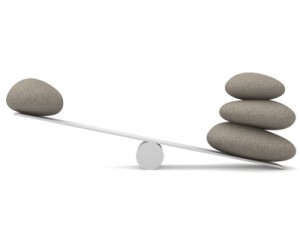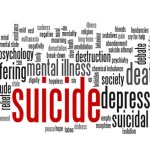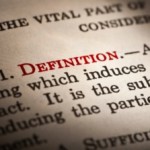I wish I could tell you that depression is no big deal — but I can’t.
Think about this number for a second: 34,598.
That’s the number of Americans that killed themselves in 2007. In the same year, 37,435 Americans died in car accidents.
Even though you’ve heard a lot more about car accident statistics, suicide is just as big a problem as car fatalities are.
It’s hard to know how many of those people committed suicide because of depression, but it’s safe to assume that the percentage is high.
That’s an extreme example of what depression can do, and chances are this won’t happen to you, but it could. Therefore, depression should always be taken seriously.
Background
On the first installment of the AG depression series we discussed depression itself; what it is and how it’s nothing like unhappiness in the general sense of the word.
Today we’ll be looking closer at what differentiates minor depression from major depression.
What we won’t be doing is diagnosing any specific person(s). This information is strictly to give you a general overview of what the depression scale looks like. It’s up to you to use the information however you see fit.
Different forms of depression
Let me start by saying that all depression is not created equal.
Depression can be mild, chronic, or severe at different times. It can fluctuate. The severity, duration, and specific characteristics of your depression will dictate how you treat it, which is why we’re talking about it here.
Minor Depression
Minor depression is generally defined as depression that lasts at least 2 or more weeks but does not have more than 5 depression symptoms at a time. Typical depression symptoms include:
- Low mood
- Fatigue
- Insomnia or hypersomnia
- Low self-esteem
- Agitation
- Loss of appetite
- Hopelessness
Minor depression often goes undiagnosed because it can feel like you just have the blues. Although I’d like to point out that being sad about something doesn’t mean you have depression, either. The issue is being sad and having additional symptoms for a prolonged period of time.
Dysthymia (Chronic depression)
Dysthymia is not debilitating. In others words, it’s long term depression that still allows you to function at a high level. If you suffered from dysthymia you’d still be able to work or go to school and more or less get on with living.
This type of depression can come and go for years. It can also seem random because it’s not always triggered by anything in particular.
It’s thought to run in families and affects women more often than men. Dysthymia can be of great concern because it can erode your self-confidence and tilt your perspective toward the negative.
Major Depression
Major depression is an illness. It often starts in the mid to late 20’s but can also begin at any time during your life. Episodes of major depression last about 6-9 months on average, but can also last anywhere from a few days or even several years.
In general, in order to qualify as major depression you must have five or more of the depression symptoms I listed above.
Major depression is also characterized by recurring feelings of negativity that may include frequent thoughts of death or suicide.
The biggest difference between minor and major depression is that major depression causes more mental distress, social distress, and tension. In short, major depression disrupts daily living whereas minor or chronic depression do not.
Depression of all types can also cause you to feel like a failure, like you will never achieve your goals, or feel awkward when interacting with others.
The next installment in the AG depression series will cover treatment methods for depression.
Once you’ve learned about what depression is, and about the various types of depression, there’s only one thing left to do. And that’s to learn how to manage or even eliminate depression from your life altogether.
References
Journal of Abnormal Psychology; Feb2011, Vol. 120 Issue 1, p155-167.
Morrison, J. DSM-IV Made Easy.






Leave a Reply